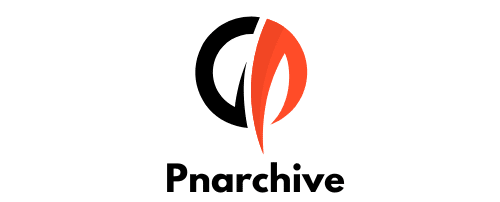What are the challenges of implementing IoT technologies in older real estate properties for smart upgrades?

There’s no question about it – IoT, or Internet of Things, is revolutionizing the way we live and work. From residential homes to commercial buildings, IoT technologies are making our environments smarter, more connected, and more efficient. Living spaces are transforming into interactive ecosystems, where devices and systems communicate with each other and with us. However, like with any new technology, the implementation of IoT in older real estate properties presents unique challenges. As you navigate the journey towards smart upgrades, understanding these challenges will help you strategize effectively.
Implementing IoT: The Challenge of Legacy Infrastructure
One of the first obstacles you will encounter when implementing IoT systems in older properties is the existing infrastructure. These properties were designed and built before the advent of IoT, and they often lack the necessary features to support IoT technologies.
This might interest you : How can real estate developers utilize green roofs for energy efficiency and aesthetic appeal?
For one, many of these properties do not have the necessary network infrastructure to support the multitude of IoT devices and sensors that make up a smart system. IoT devices require a robust and reliable network to function optimally, and upgrading the network infrastructure can be a significant undertaking, both in terms of time and cost.
Furthermore, older real estate properties are often designed with energy systems that are not compatible with IoT technology. For instance, the energy management systems in older buildings may not be able to handle the increased power requirements of smart devices. This lack of compatibility can make energy management a challenge when implementing IoT solutions.
Additional reading : What strategies can real estate professionals employ to adapt to changing consumer behaviors post-COVID-19?
IoT Data Management: An Uphill Task
Another significant challenge lies in managing the large volumes of data generated by IoT devices. A single IoT device can generate gigabytes of data daily, and when you have hundreds or thousands of these devices in a property, the amount of data becomes overwhelming.
Dealing with this deluge of data requires robust data management systems. However, older properties may not have these systems in place, and setting them up can be a complex task. You will have to consider aspects such as storage, processing, analysis, and security of the data.
Furthermore, utilizing IoT data effectively requires advanced analytical capabilities. Transforming raw data into actionable insights requires sophisticated algorithms and machine learning technologies. Without these capabilities, you will not be able to leverage the data to its full potential.
Balancing IoT Security and Functionality
IoT technologies offer numerous benefits, but they also open up new avenues for security breaches. IoT devices are often vulnerable to cyberattacks, and once compromised, they can provide a gateway for attackers to access other systems in the network.
Balancing security and functionality is a major challenge when implementing IoT in older properties. You will need to ensure that the devices and the network are secure, without compromising on the functionality of the IoT system. This may require implementing advanced security technologies and practices, which can be complex and costly.
Integrating IoT with Existing Systems
Lastly, integrating IoT technologies with the existing systems in a property can be a daunting task. Each system, whether it’s the heating, lighting, or security system, has its own protocols and standards. Making these systems communicate with each other, and with the IoT devices, can be a complex task.
Moreover, many existing systems in older properties are not designed to interact with other systems. This lack of interoperability can make integration a challenge. You will need to consider factors such as compatibility, data standards, and communication protocols when integrating IoT technologies.
Navigating the Complexities of IoT Implementation
Implementing IoT in older real estate properties is certainly not a walk in the park. The challenges are numerous, from dealing with legacy infrastructure and managing IoT data to ensuring security and integrating with existing systems. However, with careful planning, you can navigate these challenges and successfully upgrade your property with IoT technologies.
Remember, the journey towards smart upgrades is a marathon, not a sprint. Take it one step at a time, and don’t be disheartened by the challenges. With perseverance and strategic thinking, you can transform your older property into a smart, connected, and efficient environment.
Overcoming Challenges with Google Scholar-IoT Enabled Solutions
Google Scholar and other research-based platforms can play a significant role in overcoming challenges of implementing IoT technologies in older real estate properties. Advanced research findings can provide valuable insights into how to deal with legacy infrastructure, manage IoT data, ensure IoT security, and integrate IoT with existing systems.
In terms of dealing with legacy infrastructures, research has shown that it is possible to retrofit older properties with IoT devices. This can be done by installing additional network infrastructure and power systems to support these devices. While this might require significant investment, the long-term benefits like energy efficiency and improved connectivity make this a worthwhile endeavor.
Regarding data management, Google Scholar and other research platforms offer a wealth of information on big data handling strategies. They provide insights into how to set up robust data management systems, ensuring real-time processing, analysis, and security of the vast amount of data that IoT devices generate.
Security is a major concern when implementing IoT technologies. Thankfully, research has made significant strides in this area. Many scholarly articles and international conference presentations available on Google Scholar offer solutions to secure IoT devices. These include advanced security technologies and practices that can ensure both security and functionality of the IoT system.
Finally, integrating IoT with existing systems is another common challenge. Fortunately, there are a variety of IoT-based solutions that help overcome this problem. For instance, smart city initiatives often involve integrating multiple systems, and lessons learned from these can be applied to real estate properties.
The Future of Real Estate: Smart Buildings and IoT
The challenges in implementing IoT technologies in older properties are numerous, but they are not insurmountable. Through careful planning, utilization of advanced research, and strategic thinking, it is possible to transform older properties into smart buildings.
The advent of smart cities, where IoT devices play a crucial role in managing and optimizing various city functions, is a testament to the potential of IoT. Just like a smart city, a smart building uses IoT sensors and machine learning algorithms to manage and optimize a range of functions – from energy use and security to environmental comfort.
Efficient data management is crucial to the success of these smart buildings. This involves not just collection of data, but also its real-time analysis and application for improved decision-making. Similarly, ensuring security and privacy of IoT systems is vital for safeguarding both the property and its occupants.
In conclusion, despite the challenges, the transition from traditional real estate to IoT-enabled smart buildings is a worthy pursuit. As we continue to innovate and move towards a more connected future, the real estate industry, too, needs to evolve. With perseverance, strategic planning, and the power of IoT, it is possible to breathe new life into older properties, making them part of the smart revolution. The journey may be long, but the rewards – a more efficient, secure, and connected environment – are well worth the effort.
